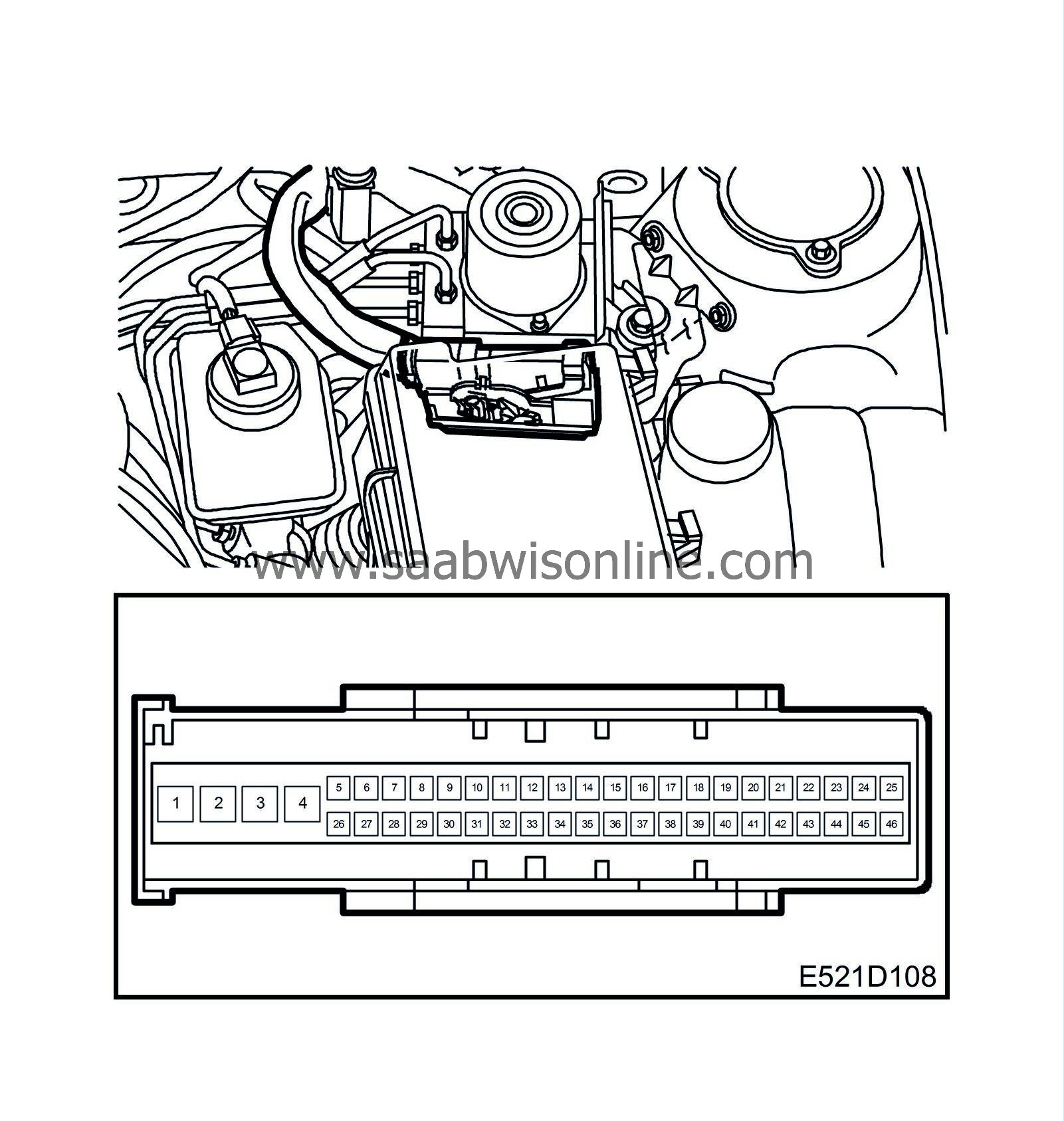Control module
| Control module |
ABS
ABS (Anti-lock Braking System) means that the solenoid valves (inlet/outlet valves) and the return pump govern the hydraulic brake pressure when one of the wheels has a greater retardation than the others. The hydraulic brake pressure can be kept constant or be reduced so that each wheel can attain maximum braking force against the road surface.EBD
EBD (Electronic Brake-force Distribution) means that the control module distributes the braking force between the front and rear wheels through solenoid valves (inlet/outlet valves).TCS
TCS (Traction Control System) means that the control module always utilizes maximum friction on the driving wheels during acceleration. A limited amount of wheelspin is modulated by braking and requesting torque limitation from Trionic. The control module activates the pressure increase valve and pressure relief valve as well as the return pump to create and govern pressure to the driving wheels that are to be braked during wheelspin exceeding a specified limit.ESP
The ESP function reduces engine torque and handle the braking on all four wheels. Torque reduction takes place after the ESP control module sends a bus message requesting a certain engine torque. The engine control module uses this request to regulate the air mass/combustion.The ESP system utilizes the TCS function to a high degree, which means that ESP normally starts to function using traction control. If further measures are required, the wheel brakes are modulated individually until the car becomes stable again.
The stabilising effect of the ESP system is based on calculations performed by the control module's microprocessor. The control module evaluates information from the system sensors: wheel speed sensors, steering wheel angle sensor, yaw rate sensor, lateral acceleration sensor and the integrated pressure sensor. Data from these sensors informs the control module of the driver's intentions and the vehicle's behaviour, e.g. in which direction the driver wishes to drive, if the driver is braking, and whether the car oversteers or understeers.
These values are processed by the control module. The control module also continually calculates the course of the car, the actual value, and compares this with desired direction indicated by the steering wheel, the desired value.
| • |
If the car starts to understeer (when the front tends to continue straight ahead in a bend), the brakes will be applied on the inside rear wheel.
|
|
| • |
If the car starts to oversteer (the rear tends to drift out), the system will apply the brakes on the outside wheels until the measured and the calculated yaw rates correspond.
|
|
The control module is continuously powered from the +30 circuit and is adapted for a voltage of between 9 V DC and 16 V DC during operation.
When the ignition key is turned to the ON position, the control module is activated and the ABS warning lamp, ESP OFF lamp and ESP lamp come during a function check. The lamps go out after 3-5 seconds if no faults are found.
Before handling the control module, touch a ground point such as the car's engine. Avoid touching the connector pins. The control module has an integrated main relay and pump relay.



